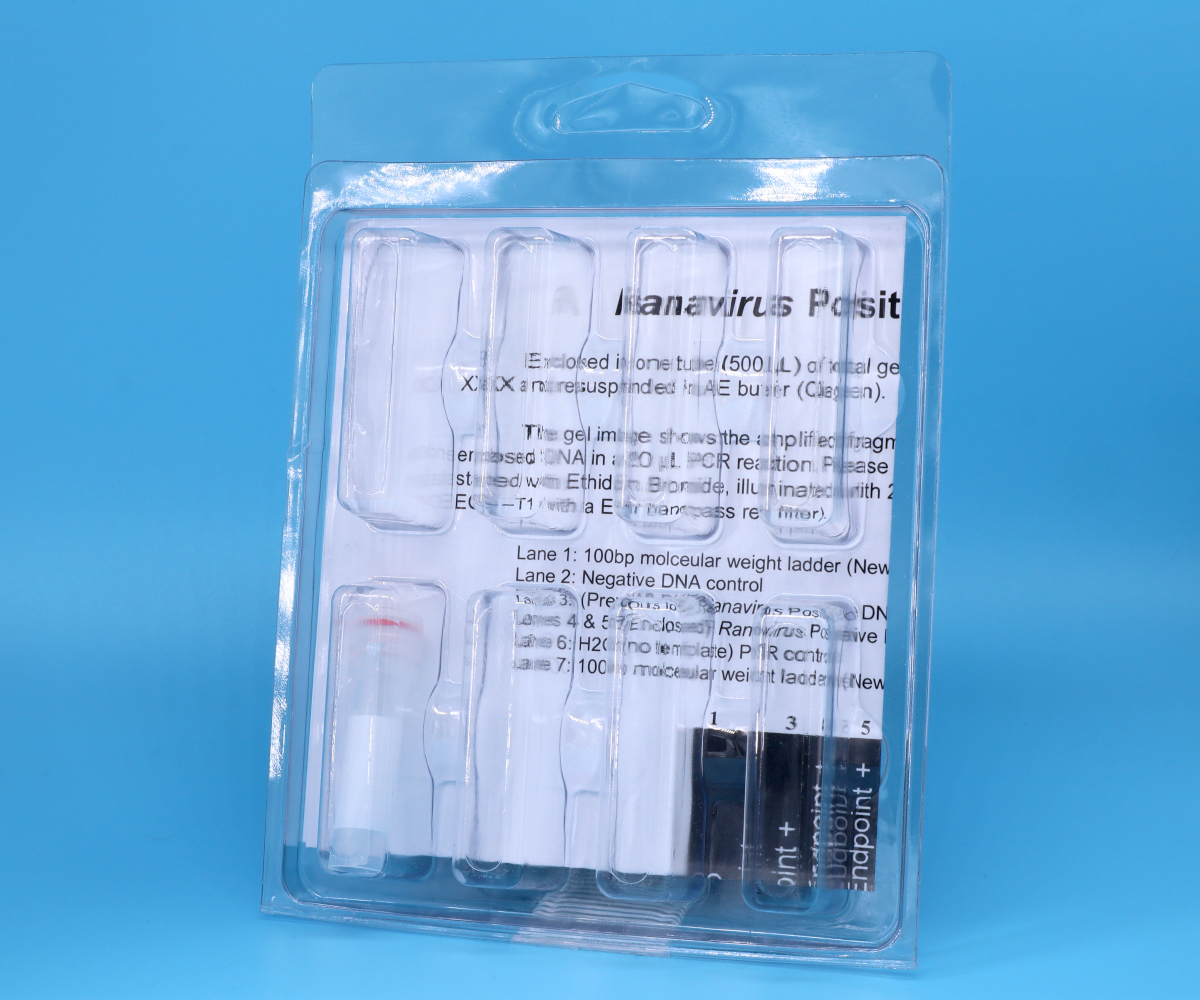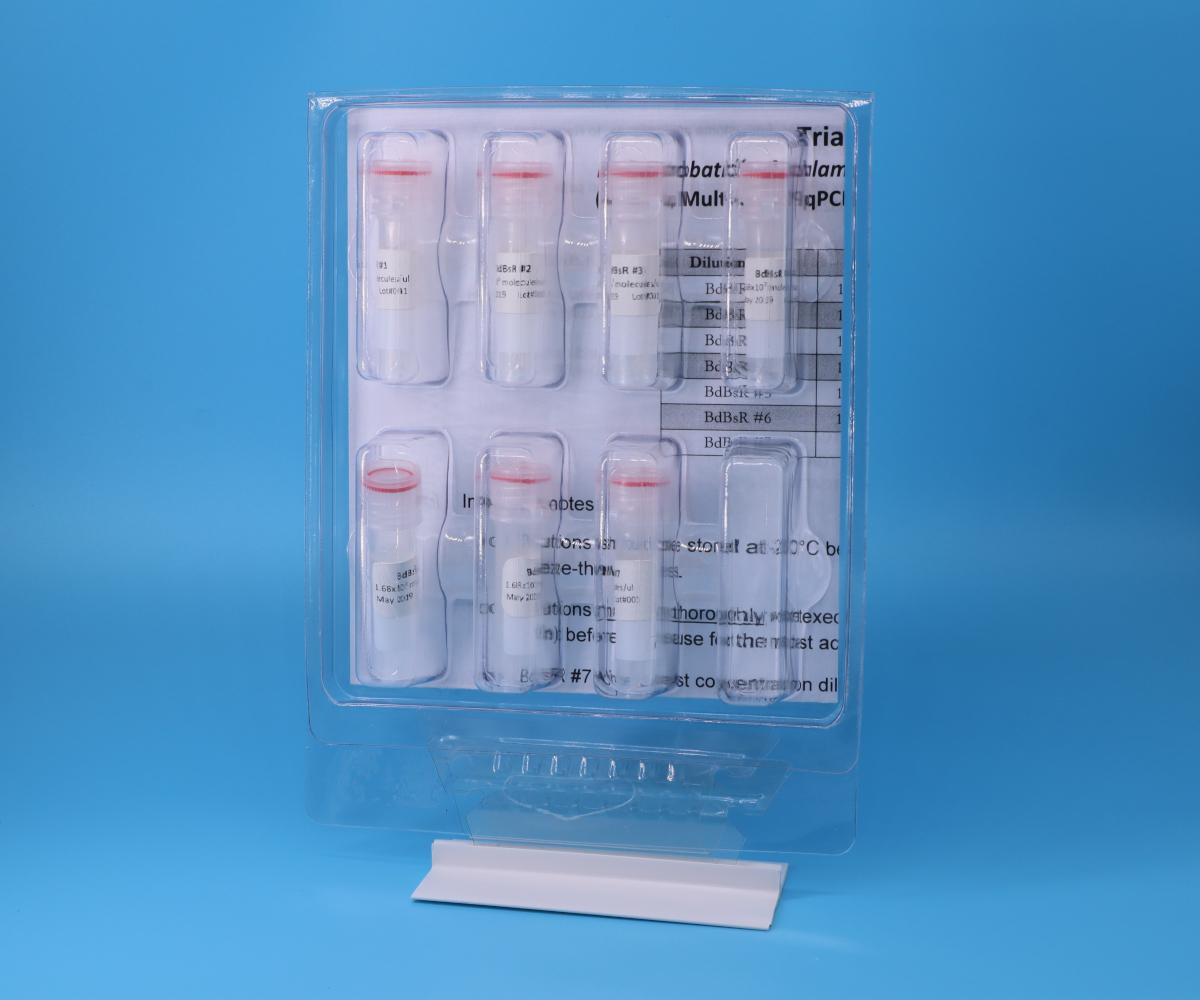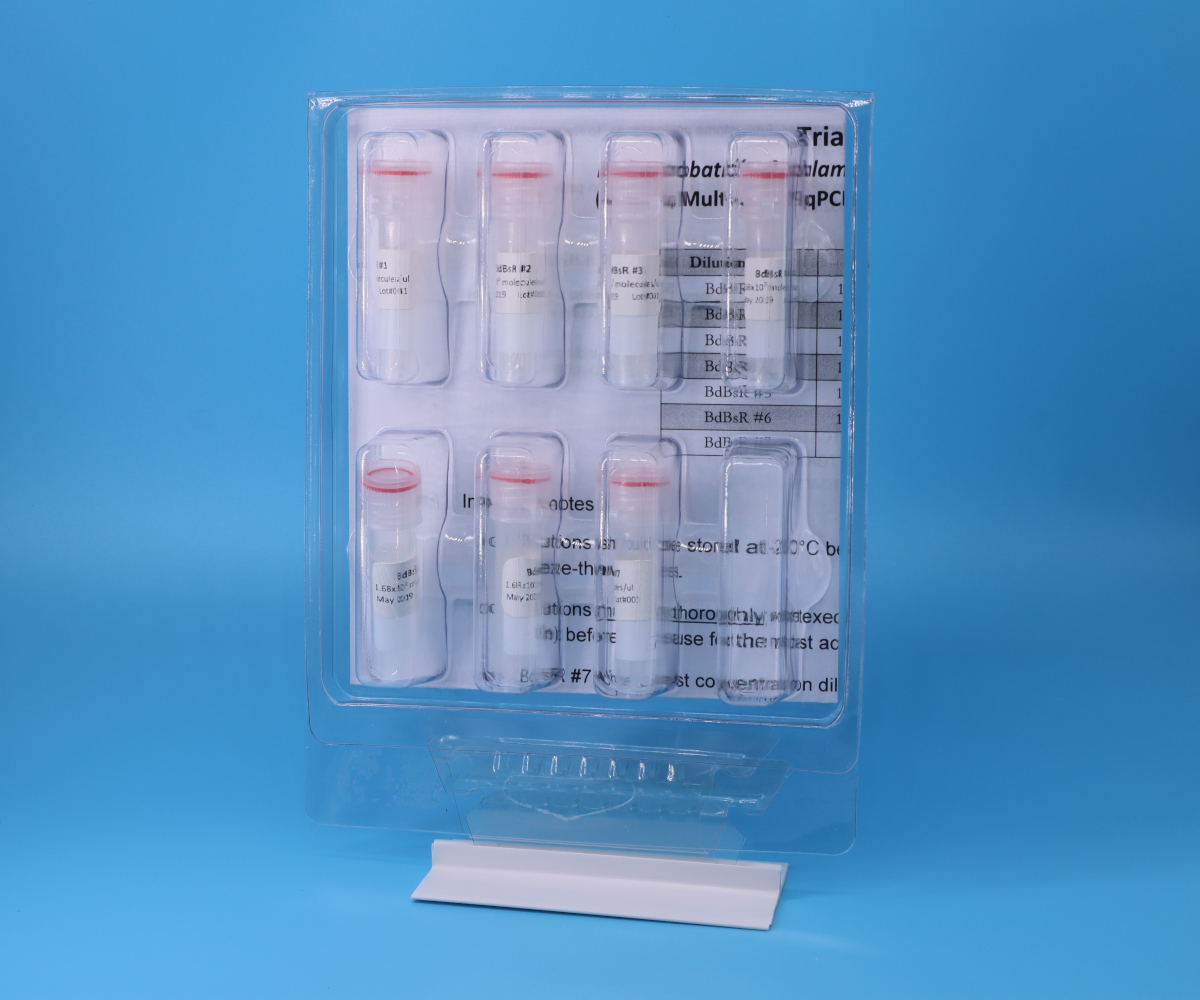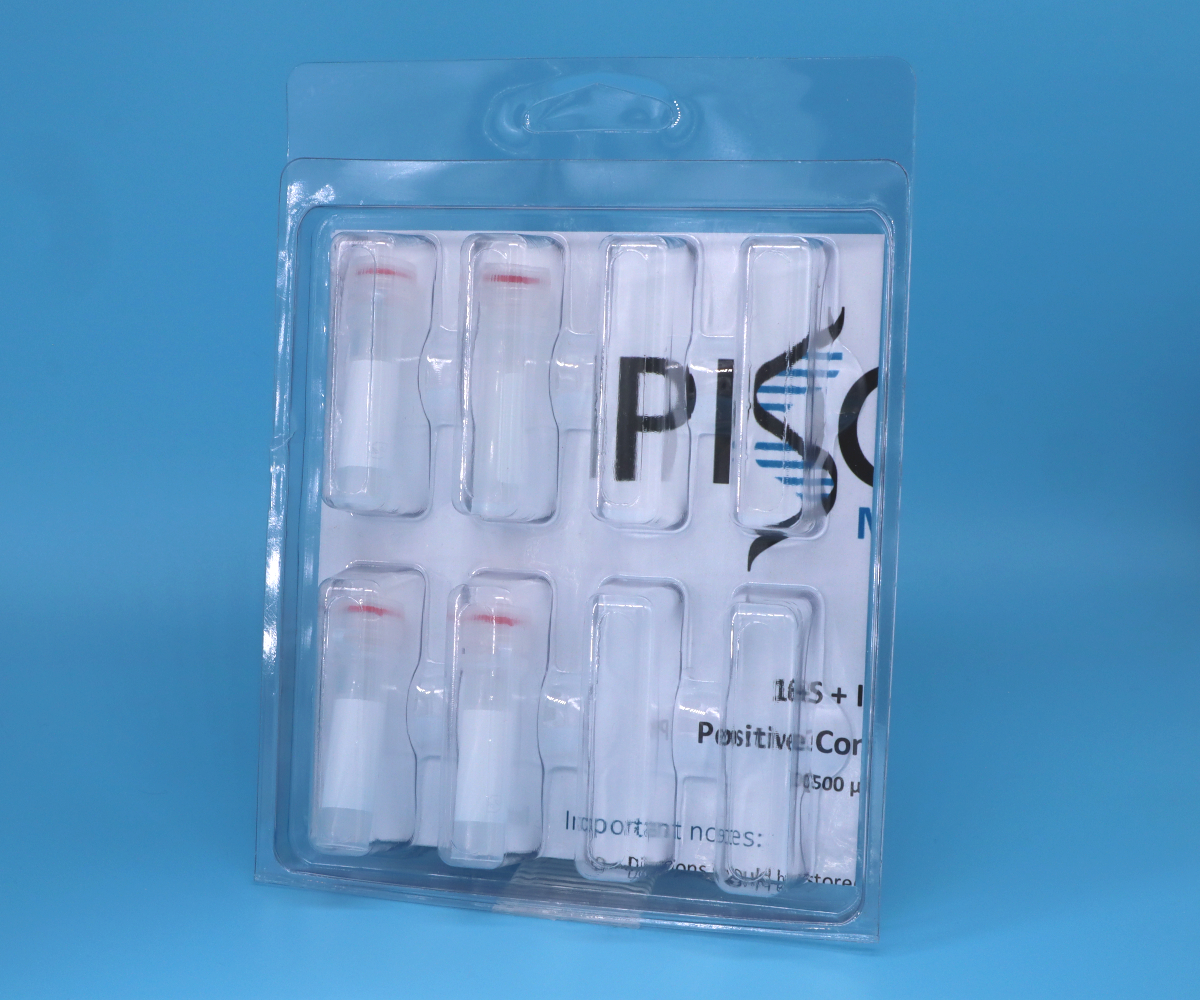PCR Controls
 All PCR assays require a positive control. For classic endpoint PCR assays, a single control reaction is used to show that the assay is working correctly. For real-time qPCR assays, 10-fold serial dilutions of the positive control are used to generate a standard curve, against which unknown samples can be compared and quantified. Positive controls can be genomic DNA (or RNA) from the target species, small synthetic oligonucleotides containing the target sequence (e.g., “gblocks” from IDT), or larger plasmids containing the target sequence for the assay. Genomic DNA is generally tedious to make and hard to standardize between batches. Synthetic oligonucleotides/gblocks are inexpensive and easy to order; however, at least anecdotally, they are less stable. Plasmids are slightly more complicated to design than gblocks but can contain target sequences for multiple assays (our Gambierdiscus plasmid kit contains target sequences for 13 assays), are exceptionally stable (we have kept a plasmid control kit at 37°C for 13 weeks with minimal effects) and can be produced in nearly unlimited quantities. Most of the positive controls we sell are plasmid dilution series kits intended for use in qPCR assays. While these kits will work in endpoint PCR assays, we do also offer less-expensive aliquots of genomic DNA suitable for PCR assays for Batrachochytrium dendrobatidis and Ranavirus. In addition to the target sequence for one or more qPCR assays, all the plasmids in our qPCR positive control kits also contain a synthetic, not-present-in-nature, ”plasmid detection sequence” that can be used in its own qPCR assay to detect or rule out the presence of contaminating plasmid DNA in potentially false positive sample qPCR reactions. The plasmid positive control kits are designed to be ready to use for reproducibly generating accurately quantified, high-efficiency qPCR standard curves. For all kits for maximum sensitivity detection qPCR assays, the plasmid serial dilutions range from approximately 1 x 106 copies/µL down to 1 copy/µL. For the Alexandrium and Gambierdiscus kits, where the qPCR assays are aimed at quantifying higher levels of the dinoflagellates, the plasmid serial dilutions are 100-fold more concentrated, ranging from approximately 1 x 108 copies/µL to 1 x 102 copies/µL. All dilutions have been accurately calibrated with a Poisson P0 procedure; r2 values for a standard curve produced using these dilutions typically exceed 0.97. The description of each plasmid indicates for which assays it will work.
All PCR assays require a positive control. For classic endpoint PCR assays, a single control reaction is used to show that the assay is working correctly. For real-time qPCR assays, 10-fold serial dilutions of the positive control are used to generate a standard curve, against which unknown samples can be compared and quantified. Positive controls can be genomic DNA (or RNA) from the target species, small synthetic oligonucleotides containing the target sequence (e.g., “gblocks” from IDT), or larger plasmids containing the target sequence for the assay. Genomic DNA is generally tedious to make and hard to standardize between batches. Synthetic oligonucleotides/gblocks are inexpensive and easy to order; however, at least anecdotally, they are less stable. Plasmids are slightly more complicated to design than gblocks but can contain target sequences for multiple assays (our Gambierdiscus plasmid kit contains target sequences for 13 assays), are exceptionally stable (we have kept a plasmid control kit at 37°C for 13 weeks with minimal effects) and can be produced in nearly unlimited quantities. Most of the positive controls we sell are plasmid dilution series kits intended for use in qPCR assays. While these kits will work in endpoint PCR assays, we do also offer less-expensive aliquots of genomic DNA suitable for PCR assays for Batrachochytrium dendrobatidis and Ranavirus. In addition to the target sequence for one or more qPCR assays, all the plasmids in our qPCR positive control kits also contain a synthetic, not-present-in-nature, ”plasmid detection sequence” that can be used in its own qPCR assay to detect or rule out the presence of contaminating plasmid DNA in potentially false positive sample qPCR reactions. The plasmid positive control kits are designed to be ready to use for reproducibly generating accurately quantified, high-efficiency qPCR standard curves. For all kits for maximum sensitivity detection qPCR assays, the plasmid serial dilutions range from approximately 1 x 106 copies/µL down to 1 copy/µL. For the Alexandrium and Gambierdiscus kits, where the qPCR assays are aimed at quantifying higher levels of the dinoflagellates, the plasmid serial dilutions are 100-fold more concentrated, ranging from approximately 1 x 108 copies/µL to 1 x 102 copies/µL. All dilutions have been accurately calibrated with a Poisson P0 procedure; r2 values for a standard curve produced using these dilutions typically exceed 0.97. The description of each plasmid indicates for which assays it will work.




